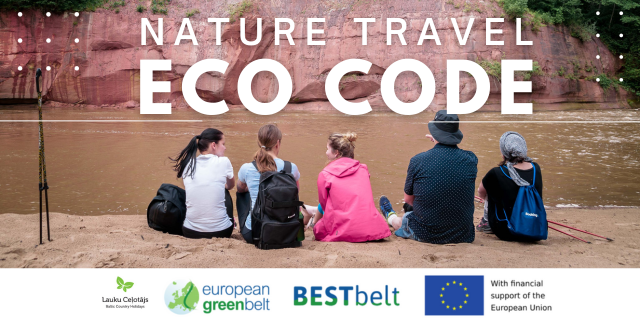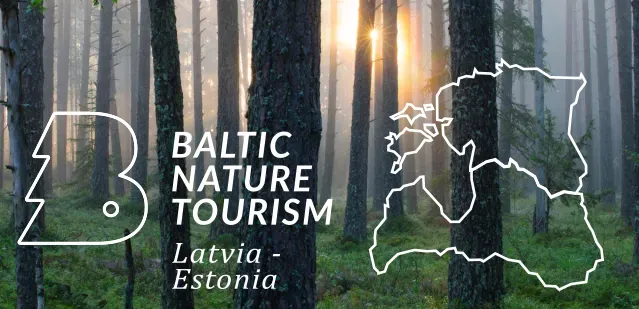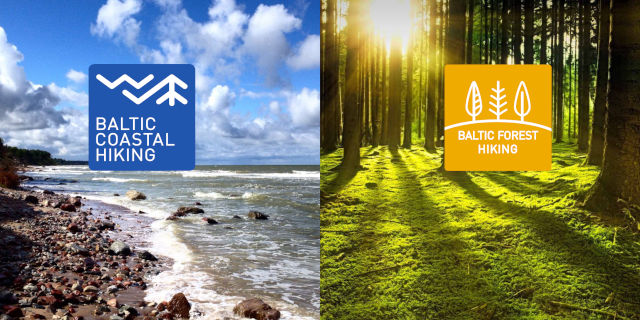Accommodation and Travel news
This summer we are inviting travellers to visit locations where important events in the history of Latvia and Estonia occurred from the beginning of World War I and up to the declaration of the two countries' independence in 1918, and then onward to the restoration of their independence in 1990/1991. More than 300 destinations in Latvia and Estonia relate to military heritage - museums, fortifications, military equipment, trails, bunkers, battle sites, military towns, infrastructure and memorial sites.
Šodien, 13. maijā, "Lauku ceļotājs" piedalījās Latvijas Republikas vēstniecības Japānā rīkotajā vebinārā tiešsaistē, kur iepazīstināja japāņu tūroperatorus un medijus ar projektu "Lauku dzīvesveids – Pievilcīgu lauku dzīvesveida galamērķu radīšana" un "Lauku dzīvesveida" produktiem Latvijā.
On December 11, 2020, the winners of the competition "New Tourism Product 2020" in Latvia organized by the Investment and Development Agency of Latvia (LIAA) were announced. The first place was awarded to the tourism product nominated by Vidzeme Planning Region – the long-distance hiking route Forest Trail (Baltic Forest Hiking).
An increasing number of rural tourism accommodation owners are ready to take all required safety precautions and receive guests who need a place to stay for self-isolation or quarantine. The sites are located in all regions of Latvia, most of all – in the central part of the country.
We keep an updated list of such accommodations and their online map >>> HERE.
As summer approaches and thoughts linger on Latvia's beautiful nature, delicious food and its people, but it is not yet allowed to leave our homes, we invite you to get acquainted digitally with the places and opportunities offered by "Flavours of Livonia", with hope that soon they can be visited for real!
"Flavours of Livonia" - it's not just dining in a pub! It is an opportunity to meet our own hosts - food producers and providers, who are amazingly versatile, able to produce their own products, receive tourists, feed and entertain them, all in accordance with local food growing and cooking traditions. Most of the Livonian-era food traditions have survived to the present day, alternating with traditional Latvian cuisine, and these flavors can be tasted thanks to entrepreneurs who respect local food and traditions, using locally grown food ingredients, take care of the environment around the and are proudu of their delicious food!
The brochure introduces the long-distance hiking route FOREST TRAIL, which passes ~ 1060 km through the forests of Latvia and Estonia, from Riga to Tallinn. In Latvia, FOREST TRAIL runs through the Gauja National Park, the Northern Gauja Forestlands and Veclaicene. In Estonia, FOREST TRAIL runs through the Haanja uplands, the Setomaa un Peipsimaa regions and further along the coast of Northern Estonia - to Tallinn. The route along the Estonian part includes the Lahemaa National Park and the coast of Northern Estonia, which is the land of the most impressive rocks, waterfalls and clints in the Baltic States. You will recognize FOREST TRAIL as Mežtaka in Latvia and as Metsa Matkarada in Estonia.
The FOREST TRAIL includes all the typical forest types and wildlife elements of the Baltic States - plants, beasts, fungi, etc.
The FOREST TRAIL is divided into 50 one or two-day hiking sections, each of which is ~ 20 km long. You can choose any section of the hike. The brochure includes a map of the hiking route.
Available languages: Latvian, English, Estonian, Russian, German
>>> Brochure (PDF)
The sauna tradition is thought to originate somewhere in northern Europe around 2,000 BC and has remained an important part of cultural life to this day in many countries including Estonia, Latvia, and Finland. The locals indeed like to debate who now has the best saunas, but the truth is that their building techniques and traditions have evolved mostly in parallel for the past few thousand years, which is why saunas are a way of life and in many ways, the history of sauna is really a history of us. In addition to the sauna traditions the countryside provides a varied ambience of heritage – numerous national parks, contrasting coastlines, historic sites, varied landscapes, rich wildlife, charming small towns full of history and peaceful milieu.
Visiting all three countries in one trip is very easy – relatively short travelling distances between and within the countries due to their small size, no border formalities since all are in EU, the same time zone, the same currency and similar climate.
Baltic Coastal Hiking is a long distance hiking route part of E9 along the coast of the Baltic Sea. The hiking route starts at the Lithuanian-Latvian border in the village of Nida in Latvia and finishes at the Port of Tallinn in Estonia. The total length of the route is 1200 km, of which 580 km are in Latvia, and 620 km in Estonia; the route can be taken in both directions and Tallinn can also be a starting point. The route is divided into days and difficulty levels, which allows you to choose the most suitable distance for yourself. Join Baltic Coastal Hiking whenever you want, take a break whenever you like and return when you feel it is the right time for hiking! More information www.coastalhiking.eu.
Creative workshops offered by the “Sauleskalns” crafts house allow children and adults to discover in himself talents as a craftsman and artist. Professional teachers help to create wonderful stuff that pleases yourself and others.
“Puzurs” is a traditional Latvian room decoration for Christmas. It is made from straw, and its’ light, airy form and precise geometry is fascinating. This decoration really brings festive feeling.
The crafts house also offers workshops in gingerbread baking and making traditional Christmas to help everyone get prepared for Christmas celebrations.
“Mazsālijas” is a guest house on an organic farm. The farm breeds fallow deer and trout, grows vegetables and fruit, makes wine. The hostess offers a 4 hour food workshop for small groups of visitors to cook a meal together in a friendly atmosphere. During the food workshop visitors will learn how to cook a meal on a firewood stove from the home produce – vegetables, trout, and fallow deer meet. The food workshop includes cooking a three-course meal: a starter (fallow deer tartar, salted trout), the main course: trout fried on butter with steamed vegetables, fallow deer meet with rosemary and potato gratin, a dessert: cream cheese with strawberry sorbet.















